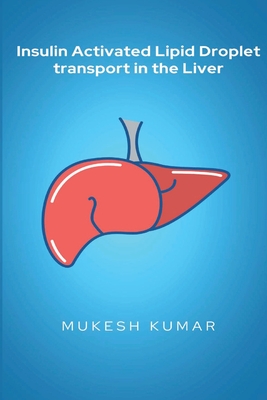
Insulin Activated Lipid Droplet transport in the Liver
Description
Insulin Activated Lipid Droplet Transport in the Liver refers to the process by which insulin signaling regulates the transport of lipids, specifically triglycerides, in the liver.
Insulin is a hormone that plays a critical role in the regulation of glucose and lipid metabolism in the body. When insulin levels are high, as occurs after a meal, it promotes the uptake and storage of glucose and lipids in tissues such as adipose tissue and the liver.
In the liver, insulin signaling stimulates the formation of lipid droplets, which are storage organelles for triglycerides. The lipids are transported to the lipid droplets through a series of processes, including lipolysis, which breaks down stored triglycerides, and lipogenesis, which synthesizes new triglycerides.
The transport of lipids to the lipid droplets is regulated by a complex network of proteins and enzymes, including perilipins, caveolins, adipophilins, and acyl-CoA synthetase. These proteins help to facilitate the movement of lipids into the lipid droplets and protect the droplets from degradation.
Disruptions in insulin signaling and lipid transport can lead to metabolic disorders such as insulin resistance, type 2 diabetes, and nonalcoholic fatty liver disease (NAFLD). These disorders are characterized by the accumulation of lipids in the liver, which can cause oxidative stress, inflammation, and endoplasmic reticulum stress.
Understanding the mechanisms of insulin activated lipid droplet transport in the liver is important for the development of therapies for metabolic disorders. Research in this area involves the investigation of gene expression, protein phosphorylation, mitochondrial function, autophagy, and other cellular processes that play a role in lipid metabolism and transport.
Homeostasis i.e. a stable state of internal environment, is a fundamental attribute of
animal physiology that involves maintenance of constant body temperature, blood pressure,
nutrient, energy levels etc. Energy is required for sustenance of vital life processes,
growth, development, reproduction and evolution. Animals must harness energy from food, but food
sources are not always available on demand. Thus, they undergo phases of satiety and
hunger. Balancing the internal energy needs in the phases of nutrient availability and
scarcity is crucial for sustaining biological processes. Nature has devised adaptive mechanisms
to cope with this fluctuation in nutrient availability by evolving molecules that are stored
in unreactive forms when food is available in plenty, but are catabolized to provide
energy at the time of scarcity. For instance, oils and fats provide neutral lipids that can be
hydrolyzed to generate ATP when carbohydrates are not available and glucose level
declines in the bloodstream.

